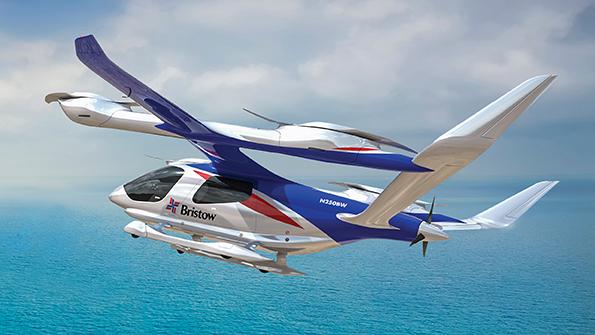Opinion: How To Foster Safe Advanced Air Mobility Operations

Every morning, I open my laptop and sort through the day’s advanced air mobility news about technology, vehicle design, investment, infrastructure, memoranda of understanding, letters of intent, concepts of operations and, of course, the race to certification. But the industry needs more than just the next round of funding and a certified aircraft. It needs safe and sophisticated air carriers—experienced operators that will fly and maintain these new-generation aircraft day in and day out and have demonstrated safe, efficient and reliable aviation operations.
We clearly are in a revolutionary period in aviation, but safety in air operations is an evolutionary process that has been ongoing since Kitty Hawk and through which our industry has learned many valuable and sometimes very painful lessons. It is often during routine, day-to-day operations that the rubber meets the road in terms of safety.
Safety is our license to operate. All air carriers have a duty to care for their employees, passengers and the communities in which we operate.
Safe outcomes are a result not only of safe aircraft design or formal safety structures and processes. They also are directly related to the culture an operator fosters and how that atmosphere affects employee decision-making. Culture is developed and matured over time. The safety culture that Bristow and other sophisticated operators have in place today has been developing and maturing over decades. That expertise and evolved safety culture can and should be leveraged to introduce new-generation aircraft into operations.
Bristow and other experienced operators well know that newly certified aircraft absolutely will be exposed to rigors, environments and a pace and scale of flights in commercial operations that they did not experience in flight testing. It will be the operator’s duty to demonstrate safe and reliable initial operations with these aircraft in the real world.
Setting the Industry Standard Many operational regulations can be viewed as a minimum acceptable standard. The best operators often exceed regulatory standards in many areas and frequently lead their industry peers to do the same.
For example, many jurisdictions have no regulatory requirement to maintain a health and usage monitoring system, monitor and manage flight data or employ formal safety management systems. All of these have been demonstrated to lead to better, safer outcomes, whether for a practice, technology or system. And in some segments of vertical flight today—such as the offshore helicopter market—these practices are industry-standard. But in other market segments, these practices are surprisingly rare.
Who Will Operate? Several major international air carriers have shown interest and invested in advanced air mobility (AAM), which is great to see. These airlines bring valuable resources, exposure and credibility to the space. That said, such Part 121 carriers likely are not going to be the ones operating these new aircraft. Most AAM flights are going to fall squarely to Part 135 operators. And historically, Part 135 operators have a much wider spectrum of cultures and approaches to operations and safety management than their Part 121 peers. We should acknowledge this variability and work together to address it as we move toward Day 1 AAM operations.
Industry Collaboration for Operational Excellence To enable a thriving sector, we must ensure that the standard for AAM operations is one of excellence. This can be achieved through deliberate industry collaboration. In 2022, Bristow began organizing an AAM Operator’s Council, a forum of future AAM operators dedicated to working closely on all things safety-related. It is intended to be an organization in which safety data can be openly shared, best practices developed and regulatory standards exceeded, where appropriate. Other segments of the vertical flight industry have initiated similar organizations at critical times in a market’s development. Tour Operators Program of Safety (TOPS) and HeliOffshore are good examples.
There certainly will be new aircraft operators entering the AAM space. But it is incumbent upon experienced aviation operators to demonstrate how to share lessons learned and to ensure the safety bar is raised for the entire industry. Nothing will crush public acceptance more quickly than an early incident or accident with one of these new aircraft. And in a burgeoning industry vying for public trust, it will not matter which aircraft or which operator is involved.
Experience Matters Traditional aircraft are not going anywhere, but new propulsion technologies are on short final and are best placed in experienced hands. Now is the time for seasoned operators to look up, come together and collaborate in an open forum. It will be up to us to deliver these new technologies safely into operational reality.
Mandy Nelson, director of strategic relationships for AAM at Bristow Group, is also a commercial pilot.